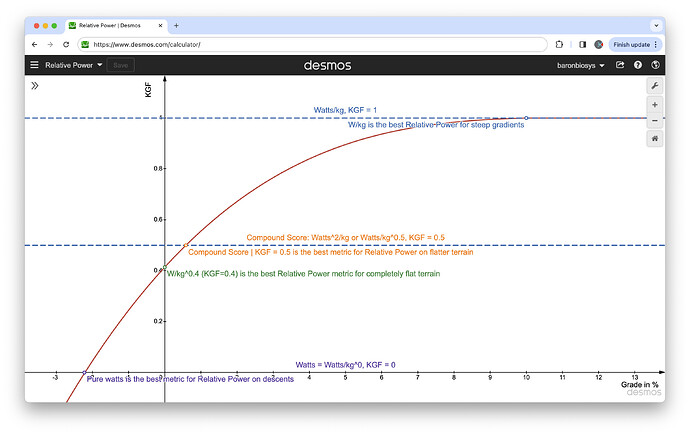Here’s a chart I created to help you understand the concept of Relative Power (note that on the Xert system, we normalize Relative Power to a 75kg rider. The “relative power” on this chart is just the raw comparison number):
What you’ll notice is that using W/kg is generally pretty good when the grade increases above 5% say. If you’re on flatter ground, W/kg^0.5 or so is a good metric. This mathematically is the same as the Compound Score that you may see elsewhere. Once the grade goes negative weight has less and less importance and beyond about -2%, weight is an advantage.
When Xert calculates relative power, it uses the gradient data from your activity to determine second-by-second KGF values and uses these, normalized to 75kg (it’s not intuitive to compare W/kg^0.5 for example between riders) to calculate Relative Power.
Why should you care?
With the upcoming Race/Achievement analysis feature where you can use data from another rider / previous ride as input to your goal, transforming that rider’s data (using their weight and the gradients from the ride) into data you can perform (using your weight) is needed. Indeed, you can even examine how much less power you will need if you lost weight as part of your goal. Maybe losing few pounds may be all you need not to get dropped! Soon you’ll know. When? It’s our highest priority but as you can imagine, it’s not a simple task… but we’re making great progress!
